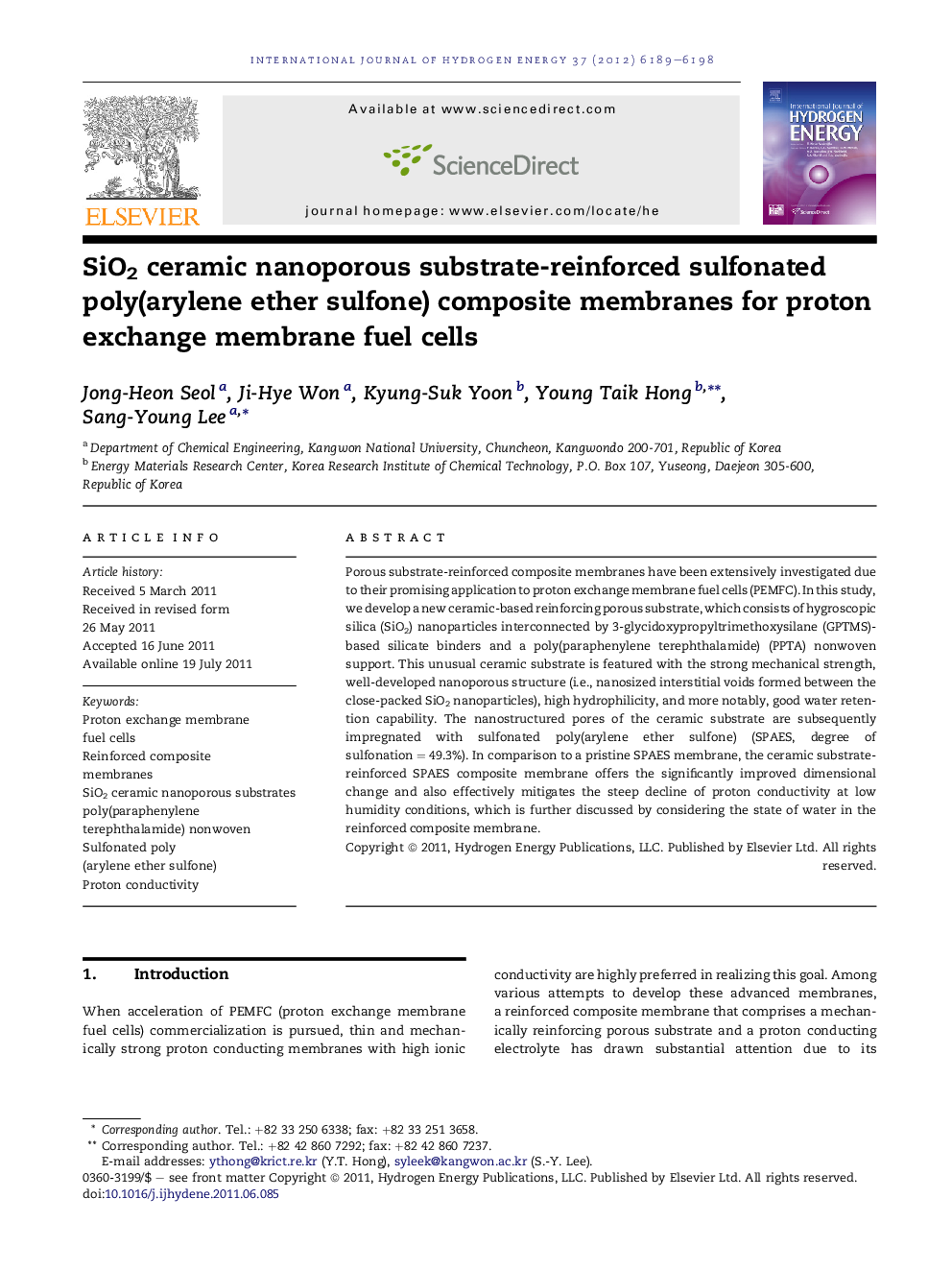| Article ID | Journal | Published Year | Pages | File Type |
|---|---|---|---|---|
| 1276914 | International Journal of Hydrogen Energy | 2012 | 10 Pages |
Porous substrate-reinforced composite membranes have been extensively investigated due to their promising application to proton exchange membrane fuel cells (PEMFC). In this study, we develop a new ceramic-based reinforcing porous substrate, which consists of hygroscopic silica (SiO2) nanoparticles interconnected by 3-glycidoxypropyltrimethoxysilane (GPTMS)-based silicate binders and a poly(paraphenylene terephthalamide) (PPTA) nonwoven support. This unusual ceramic substrate is featured with the strong mechanical strength, well-developed nanoporous structure (i.e., nanosized interstitial voids formed between the close-packed SiO2 nanoparticles), high hydrophilicity, and more notably, good water retention capability. The nanostructured pores of the ceramic substrate are subsequently impregnated with sulfonated poly(arylene ether sulfone) (SPAES, degree of sulfonation = 49.3%). In comparison to a pristine SPAES membrane, the ceramic substrate-reinforced SPAES composite membrane offers the significantly improved dimensional change and also effectively mitigates the steep decline of proton conductivity at low humidity conditions, which is further discussed by considering the state of water in the reinforced composite membrane.
► SiO2 ceramic nanoporous substrate for SPAES-reinforced composite membrane. ► The new substrate comprises SiO2 nanoparticles, GPTMS binders, and PPTA nonwoven. ► The new substrate features unique nanoporous structure and high hydrophilicity. ► The composite membrane shows significantly improved dimensional change. ► Mitigation of steep decline in low humidity proton conductivity is also obtained.
